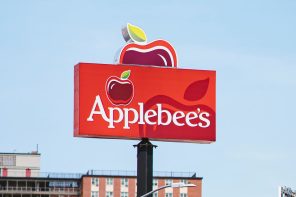The popularity of designs that prioritised off-premise ordering, such as smaller stores or additional branding in the drive-thru, was already on the rise before the outbreak of COVID-19, now in our post-pandemic world, these design priorities are a necessity.
Government restrictions, the possibility of future regional lockdowns, higher health and hygiene standards, and the adoption of social distancing as normality will all affect how restaurants build their brands. So, what could the restaurant of the future look like?
Marty McCauley, design director at FRCH NELSON, a design firm based in the United States, has noted that tables won’t necessarily be permanently designed to be a metre or two apart, or have barriers between them. His firm has designed for Yum! Brands concepts including KFC units, as well as stores for other brands like Buffalo Rings & Wings and Domino’s. Based on his past experience with quick-serve design and the state of the industry today, McCauley believes quick-service brands will begin moving at least some of their portfolios toward small-footprint units geared toward facilitating off-premises transactions.
“What brands have learned is they have to have the ability to be agile, and customers are really responding to things like curbside pickup and other off-premises channels,” explained McCauley.
“I can imagine moving forward that the commitment to flexibility will bring with it a range of expression. The idea isn’t that every building will get smaller, but that they have to create these pathways to go out and grab the attention of guests. More brands might try to-go-only concepts where they’re catching guests’ attention digitally rather than with signage outside of their storefront. Restaurants previously aimed to bring guests to them, but now they are having to figure out how to bring their brand to the guest.”
McCauley noted that FRCH NELSON specialises in designing buildings where every single inch is scrutinised. The stakes have been raised in a world where the majority of guests never enter storefronts. If that continues into the future—and McCauley and his team think that it might—restaurant companies and their design firms will face the new challenge of creating branding out of the smallest outdoor details. These include signage, menu boards, pre-sell boards, drive-thru entry points, outdoor eating areas, and even pavement. Every element should be seen as a branding opportunity.
While no industry expert can say with certainty what store build-outs or customer behaviour will look like in the future, it’s clear that off-premises will play a larger role in design than ever before
“Everything is on the table right now,” McCauley concluded. “Everyone we talk to now is so heavily relying on the digital brand to forge their relationship, and you can feel that change we’ve been anticipating for a while; dining in has become less emphasized, and you must find ways to ensure that the digital relationship is still a branded experience that connects the guest to the product. It’s exciting for us, honestly.”






